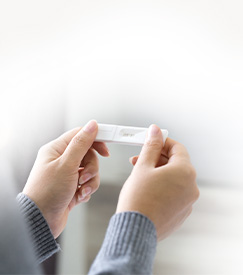 Until going through labor and delivery, you cant imagine how much pain to expect or what the entire experience will be like. For many birthmothers, the fear of delivery is worse than delivery really is. Thinking about the hospital stay, as well as preparing for it in advance, can help reduce your anxiety. The best thing to do is to stay informed and find out as much information as you can beforehand.
Until going through labor and delivery, you cant imagine how much pain to expect or what the entire experience will be like. For many birthmothers, the fear of delivery is worse than delivery really is. Thinking about the hospital stay, as well as preparing for it in advance, can help reduce your anxiety. The best thing to do is to stay informed and find out as much information as you can beforehand.
Here is a brief overview of some things you can expect during your labor and delivery.
Signs of Labor
The due date your doctor gives you is just an indicator that is supposed to serve as guide, but no one can predict with certainty when labor will begin. Sometimes, labor can start three weeks before the due date or even as late as two weeks after. Here are some common signs of going into labor. If you experience any of these, it’s a strong indicator that labor isn’t too far off.
- If your belly feels lower and you’re experiencing an increased need to urinate, you are noticing the first signs of labor. In this stage, your baby is descending and pressing down on your bladder. This can occur anywhere form a few hours or even a few days from the onset of labor.
- Brownish discharge from your cervix can occur days before labor. If this happens to you and your due date is near, dont panic since. This is just a natural process every woman goes through. If the discharge is bright red, however, call your doctor immediately.
- Fluid leaking from your vagina means that the membranes that surrounded and protected the baby have ruptured, also known as your water breaking. This can occur hours before labor starts or sometimes during the process. Most women who experience this sign go into labor within 24 hours.
- Contractions are usually a surefire sign you are going into labor. At first, you may experience periodic and more irregular contractions, but if they occur at intervals of less than 10 minutes, that is a good indication that labor has begun.
Stages of Labor
Labor is typically divided into three stages:
- Latent. This first phase of labor is the longest and least intense. You have likely arrived at the hospital and completed your admission paperwork. When you are in a triage room, a nurse will hook you up to a monitor to track the babys heartbeat. You will also be checked to determine how much your cervix is dilated.
- Transition. During the transition stage, the cervix dilates up to 10 cm. Contractions are stronger, more frequent and painful, coming every two to four minutes and lasting from 60 to 90 seconds. Intense pain and pressure in your back and abdomen during each contraction are normal signs every woman experiences in this stage.
- Delivery. This stage begins when the cervix is fully opened. The doctor will tell you to push during this stage. Your pushing will propel the baby through the birth canal. When the widest part of your babys head reaches the vaginal opening and the head comes out, the doctor will wipe the remaining fluids off the mouth and nose. After that, you will need to push harder to deliver the babys body and shoulders. Once the baby is delivered, the doctor will cut the umbilical cord. In this last stage after your baby is delivered, you will also deliver the placenta that nourished the baby inside the womb. Each woman’s labor process is drastically different, and it can last anywhere from 12 to 24 hours or even longer.
Whatever you experience at any stage, if you’re unsure of or worried about anything, never hesitate to contact your doctor.






